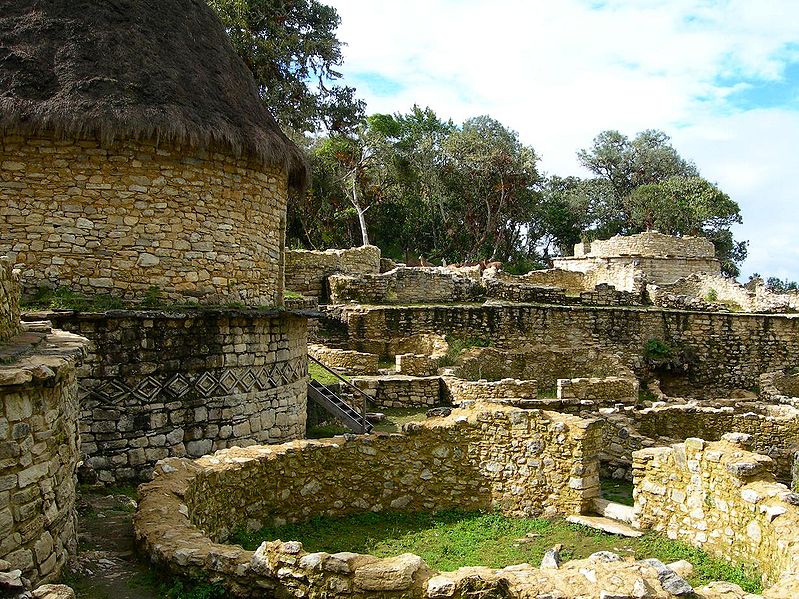The most famous ruin is Kuelap. This fortress is the largest stone structure of South America. It contains more than 450 stone houses, mostly circular. It is located on a mountain higher than Machu Picchu, at 9500 feet, and is older than the Inca Empire. It was started at around 800 A.D. and was occupied until about 1500 A.D. It’s outer wall is about 700-800 yards long and ranges from 35 to over 50 feet high.
 |
| Kuelap, fortress of Peru [José Porras, Wikimedia Commons, CC BY-SA 2.5] |
There are many other unexcavated ruins on mountaintops in the area and new sites are always being found. Years ago, when I was hiking in the area with Dr. Peter Lerch, an officer from the Institute of Culture, he pointed to several mountaintops where you could faintly make out ruins. He knew they were there, but just hadn’t had time to investigate them because the only way to get to them was by foot or by horse. Once, when I was sending a group from Arizona to the area, my local operator told me that a new “lost city” had recently been discovered and wanted to know if my group would like to go there and be the first “gringos” to see the site. Naturally they said they would like to and it was one of the highlights of their trip.
 |
| Snake Petroglyphs at Kuelap [Ramtyns, Flickr, CC BY-NC 2.0] |
 |
| Ruins of Chachapoya Dwellings [Dave Lonsdale, Flickr, CC BY 2.0] |
There are several cliff tomb sites such as La Petaca. Revash and Diablo Huasi and other citadels, such as Tajopampa and La Joya. The Chachapoyans practiced mummification. Several were found in La Petaca and many were found in the ruins at Laguna de Los Condores, which was discovered in 1996. A museum was built in Leymebamba to house the remains of the mummies and other artifacts that were found in the area.
 |
| Revash Mausoleum Tombs [Pirindao, Flickr, CC BY-NC-ND 2.0] |
In the past few years, some of the highest waterfalls in the world, such as the Gocta waterfall have been found.
 |
| La Gocta Waterfall [Martin St-Amant, Wikimedia Commons, CC BY-SA 3.0] |
So, for those who like to visit exciting archeological places that are off the beaten path and away from the crowds, this is the place.
This guest contribution is by Jim McDaniel, Travel Innovations - Australian & Amazonian Adventures






0 comments:
Post a Comment